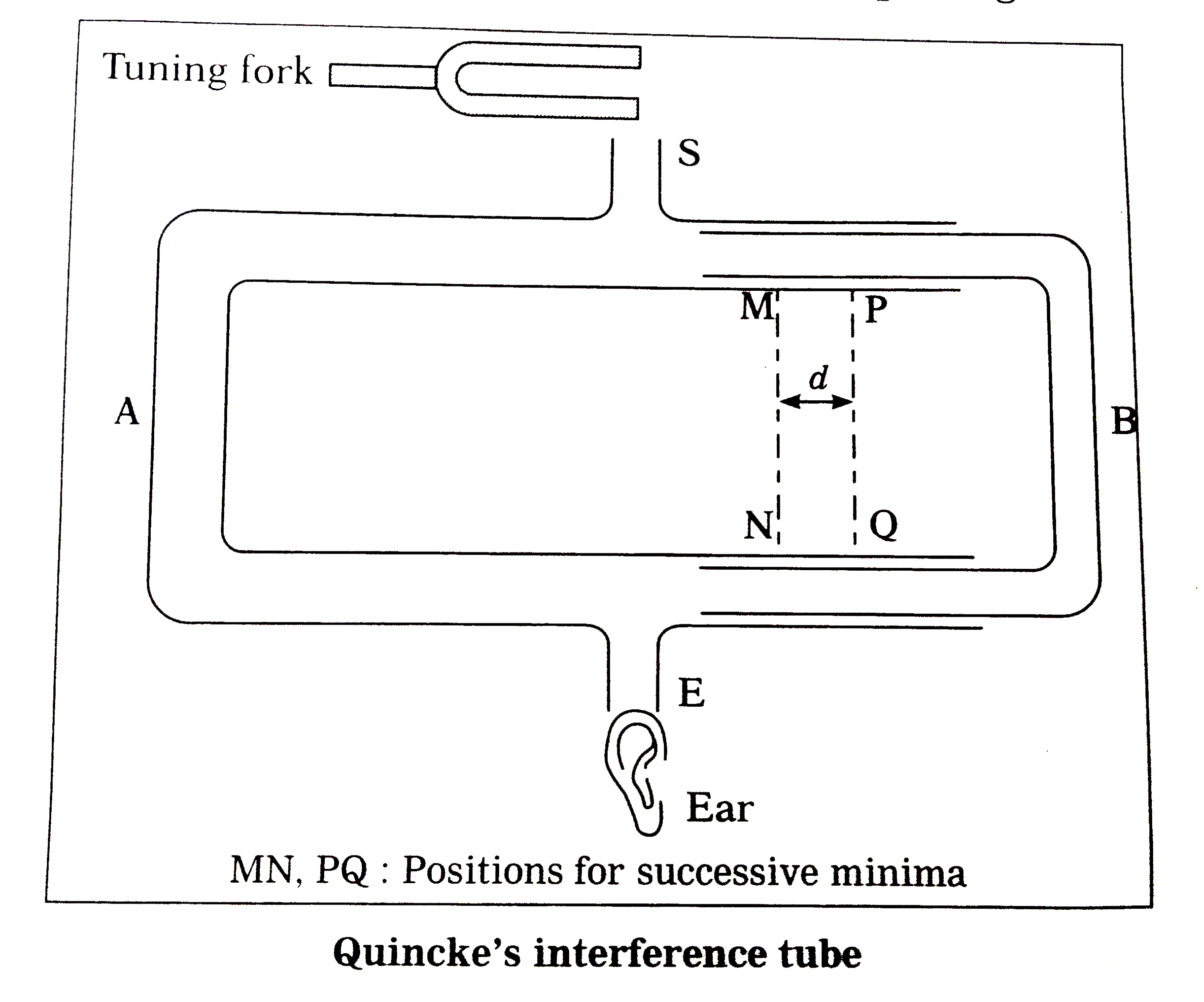Describe with a neat diagram Quinche's method to demonstrate interference of sound waves and to determine the wavelength and speed of the sound waves.
Text Solution
Quincke's tube consists of two glass U-tubes, A and B as shown in the figure. Tube A has two openings at S and E, and is held fixed. Tube B can be slided in or out of tube A. A source of sound, e.g., a vibrating tuning fork, is held at S and the ear is hel against the opening E.

Sound waves from S arrive at E travelling along the paths SAE and SBE. Since these two waves are derived from the same source S, they are coherent. When the two paths are equal or differ by a whole number of wavelengths, the waves meet at the end E in phase. then the listener hears a loud sound corresponding to constructive interference.
Drawing out the tube B slowly, the sound dies away and becomes a minimum when the path difference, SBE−SAE, is λ/2, where λ is the wavelength of the sound. Then, the waves meeting at E are in opposite phase to each other, cancelling each other out in destructive interference. If the tube B is drawn further out by an equal distance, the path difference will be one wavelength and the loud sound reappears.
If the next minimum (say, PQ) is d, then the wavelength λ=2d. the speed of sound in air is v=nλ, where n is the frequency of the source S.
Thus, the wavelength of the sound can be obtained by measuring d, and the speed of sound can be determined when a source of known frequency is used.
|
Topper's Solved these Questions
- EXPERIMENTS AND DIAGRAMSBOOK - NAVNEET PUBLICATION - MAHARASHTRA BOARDCHAPTER - EXPERIMENTS AND DIAGRAMSEXERCISE - INTERFERENCE AND DIFFRACTION
1 Videos
- EXPERIMENTS AND DIAGRAMSBOOK - NAVNEET PUBLICATION - MAHARASHTRA BOARDCHAPTER - EXPERIMENTS AND DIAGRAMSEXERCISE - CURRENT ELECTRICITY
1 Videos
- EXPERIMENTS AND DIAGRAMSBOOK - NAVNEET PUBLICATION - MAHARASHTRA BOARDCHAPTER - EXPERIMENTS AND DIAGRAMSEXERCISE - ATOMS, MOLECULES AND NUCLEI
1 Videos
- DISTINGUISH BETWEENBOOK - NAVNEET PUBLICATION - MAHARASHTRA BOARDCHAPTER - DISTINGUISH BETWEENEXERCISE - Assingment
3 Videos
- EXPLANATION, CHARACTERISTICS AND PROPERTIES BOOK - NAVNEET PUBLICATION - MAHARASHTRA BOARDCHAPTER - EXPLANATION, CHARACTERISTICS AND PROPERTIES EXERCISE - Assignments
2 Videos
Similar Questions
Knowledge Check
Speed of sound waves in air
Ais independent of temperatureBincreases with pressureCincreases with increase in humidityDdecreases with increase in humidity.The frequency , wavelength and speed of a sound wave are related as
Av−vλBλ=uvCv=λvDu=vλThe wavelength of sound wave in a gas is -
ATHE distance between compression and rarefaction propagating in the medium.BThe distance travelled by the wave in one second.CThe distance between two consecutive particles of the medium oscillating in the same phase.DNone of these
